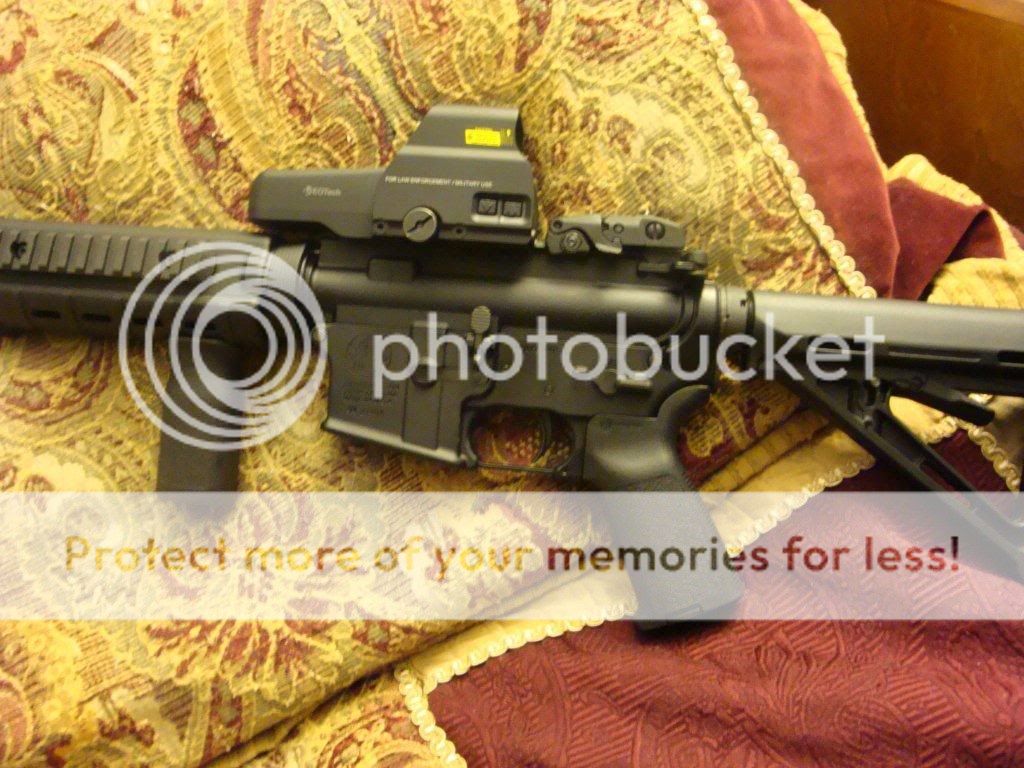Nice looking rifle CMichael.
When addressing rifle (pistol too) marksmanship, don't forget to review the fundamentals. 20 yards, 200 yards or further, they all apply for each and every shot.
1. Stance or position: Ballanced with skeletal support and a minimum of musculature effort. A steady weapon is the goal with a natural point of aim.
2. Grip: No need for a death grip on the weapon, just firm and comfortable. Your non firing hand is supportive and your firing hand controls the rifle.
3. Breathing: Keep your self oxygenated for best vision, concentration and reduction in muscle tremmors. When firing the actual shot, fire during your natural respatory pause if possibe.
4 & 5. Sight allignment and sight picture: With the Eotech and scope sights, the sight allignment is taken care off, but you still need a good sight picture or consistant point on the target to aim at.
6. Trigger contol: Your trigger pull should be seperate from the grip on your rifle. It is independent of your grip and should not disturb the lay of your rifle when you trip the sear. Don't ambush the target with a trigger jerk as your sight drifts by the bull, fire within your natural wobble area. A good stance helps to reduce this or as I say, the closer to the ground you are, the steadier you are.
7. Final focus and calling the shot: At the time of firing, you should know where that sight was pointed on the target and thus know where the bullet will hit. It's called "calling the shot." It's very critical in team matches in the coach-shooter dialog or the sniper-observer dialog in the field. By knowing where that muzzle was pointed at the instant of firing you can discount flyers from the group and strive to shrink the group down.
8. Follow through: Let the rifle recoil naturally and don't quit concentrating on the shot until the recoil is complete.
Remember, you apply each of these for each shot when shooting for maximum accuracy. If you're running and gunning while room clearing, well that's a different technique, but learn these first. How to get there without spending a fortune on ammo? Dry fire. Do this enough so that you start to apply the fundamentals automatically for each shot and then take that skill to the range and confirm it.
Oh, and first, check to see that your Eotech mount is firmly mounted and not loose!
Good luck.




